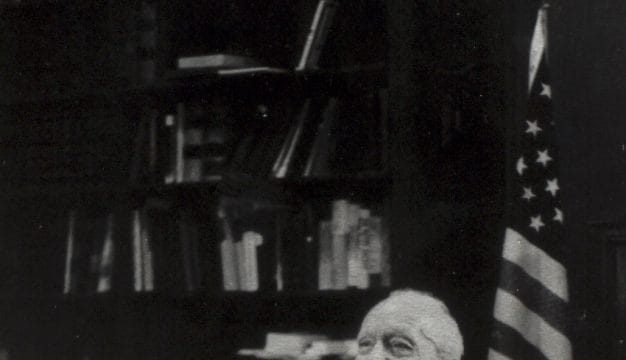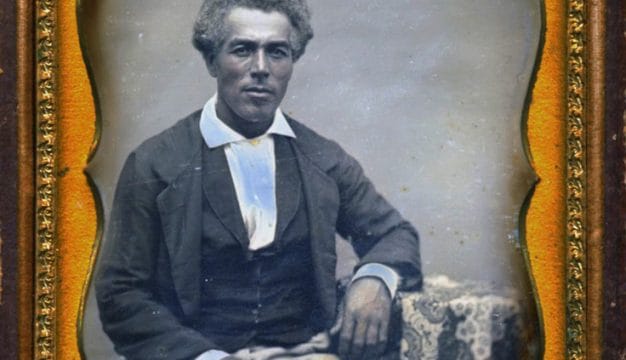Early Aviation Experiments in Alabama
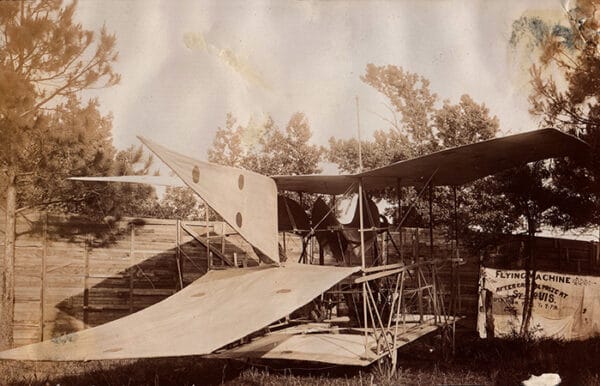 Fowler Seaplane Prototype
Aviation experimentation in Alabama can be traced back to the earliest days of flight in the United States. The first documented controlled and sustained flight of a powered, heavier-than-air machine (as opposed to “lighter-than-air” balloons) over the state of Alabama occurred on March 26, 1910. Then, Orville Wright ascended above the cotton fields west of Montgomery in one of their aircraft known as the Wright Transitional Flyer. The flight was made in conjunction with the establishment of the nation’s first civilian flying school, established by brothers Orville and Wilbur Wright to train aviators for the newly formed Wright Exhibition Company. Although Orville Wright was the first to achieve this historic milestone, he was not the first to attempt a machine capable of doing so. In the years preceding the success of the Wright Brothers at Kitty Hawk, North Carolina, on December 17, 1903, at least four aerial experimenters in Alabama conceived of flying machines of their own design.
Fowler Seaplane Prototype
Aviation experimentation in Alabama can be traced back to the earliest days of flight in the United States. The first documented controlled and sustained flight of a powered, heavier-than-air machine (as opposed to “lighter-than-air” balloons) over the state of Alabama occurred on March 26, 1910. Then, Orville Wright ascended above the cotton fields west of Montgomery in one of their aircraft known as the Wright Transitional Flyer. The flight was made in conjunction with the establishment of the nation’s first civilian flying school, established by brothers Orville and Wilbur Wright to train aviators for the newly formed Wright Exhibition Company. Although Orville Wright was the first to achieve this historic milestone, he was not the first to attempt a machine capable of doing so. In the years preceding the success of the Wright Brothers at Kitty Hawk, North Carolina, on December 17, 1903, at least four aerial experimenters in Alabama conceived of flying machines of their own design.
Andrew Denny (1812-1870), a native of Boston, Massachusetts, relocated to the Clarke County settlement of Suggsville in 1836 and is considered to be first aviation experimenter in Alabama. Regarded as an exceptional physician who treated the most challenging cases, Denny has also been described as an experimenter and visionary. A man of many interests, Denny maintained approximately 2,000 bee hives throughout the Suggsville community. Friends and neighbors would observe Denny sitting for hours studying the action of the bees, an activity that may have inspired him to conceive of a flying machine based on the motion of bees’ wings.
Reportedly, the house in which Denny resided was located at the top of a high hill. It seemed to have been his plan to build some type of craft that would soar from the hill and remain aloft through mechanically flapping wings, a type of vehicle known as an ornithopter (from the Greek for “bird wing”). In his effort to mechanically replicate the natural ability of bees to sustain flight, Denny employed the services of a local mechanic for two years and invested between $5,000 and $8,000. Although no physical evidence remains to establish that Denny actually constructed a machine to replicate the flight of bees, a marker erected by the Clarke County Historical Society to commemorate the Suggsville community includes a reference to his experiments.
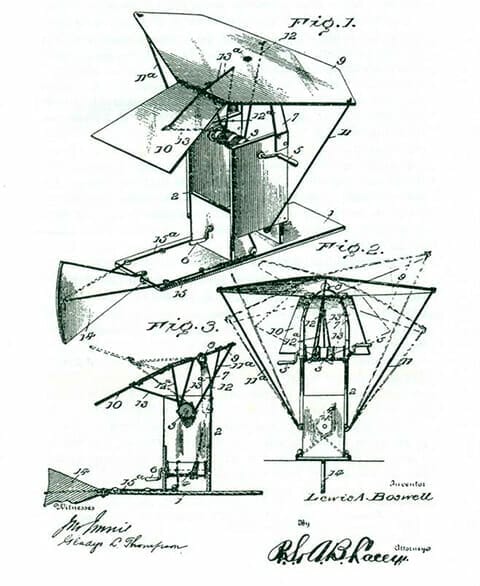 Boswell Patent
Lewis Archer Boswell (1834-1909) was born in Lunenburg County, Virginia. Like Denny, Boswell was a physician and attended the University of Virginia before enrolling in the Jefferson Medical School in Philadelphia. Biographer Landon C. Bell describes Boswell as having wide-ranging interests and was a self-educated expert in ornithology, a branch of zoology relating to the study of birds. After reading an article related to the mechanical aspects of bird flight, Boswell developed the belief that humans could fly through the air in a machine designed to replicate the flight of a bird. Boswell constructed a strange contraption that looked something like a flying bicycle, with wings that flapped as the rider pedaled. Although no documentation exists that the design was ever tested, Boswell continued to advance his theories relating to the possibility of mechanical flight. In 1869, Boswell married and relocated to Talladega County, where he continued his inventive explorations into the concept of a flying machine. In April 1874, he submitted an application to the United States Patent Office for his idea, “Improvements in Aerial Propeller Wheels,” for propeller-like devices designed to move a machine through the air. The patent was granted in September 1874.
Boswell Patent
Lewis Archer Boswell (1834-1909) was born in Lunenburg County, Virginia. Like Denny, Boswell was a physician and attended the University of Virginia before enrolling in the Jefferson Medical School in Philadelphia. Biographer Landon C. Bell describes Boswell as having wide-ranging interests and was a self-educated expert in ornithology, a branch of zoology relating to the study of birds. After reading an article related to the mechanical aspects of bird flight, Boswell developed the belief that humans could fly through the air in a machine designed to replicate the flight of a bird. Boswell constructed a strange contraption that looked something like a flying bicycle, with wings that flapped as the rider pedaled. Although no documentation exists that the design was ever tested, Boswell continued to advance his theories relating to the possibility of mechanical flight. In 1869, Boswell married and relocated to Talladega County, where he continued his inventive explorations into the concept of a flying machine. In April 1874, he submitted an application to the United States Patent Office for his idea, “Improvements in Aerial Propeller Wheels,” for propeller-like devices designed to move a machine through the air. The patent was granted in September 1874.
In 1900, Boswell claimed to have devised the necessary devices to steer an aerial machine both right and left and to ascend and descend at will with ease and safety. This claim may have been related to a second patent application submitted to the United States Patent Office in September 1901 for his concept, “Steering Mechanism for Dirigible Airships.” The design incorporated multiple controls for steering a machine through the air. Although his patent did specify a control system for dirigible airships, it seems he intended to combine his design for the steering mechanism with his aerial propeller-wheels concept to provide systems of control and propulsion of a machine capable of flight. Although he never achieved success with his aerial concepts, Boswell was the first Alabama resident to obtain a patent for the design of a component of a flying machine.
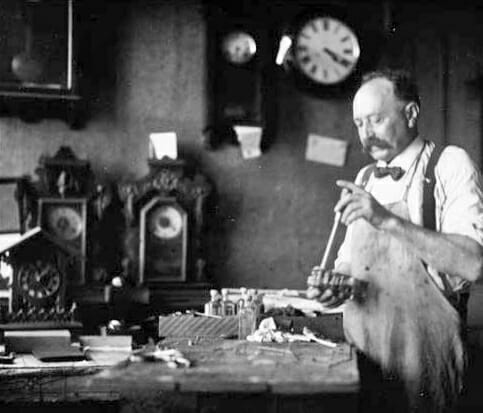 John Ellis Fowler
Born in Saltillo, Mississippi, John Ellis Fowler (1862-1939) relocated to Mobile, Mobile County, in 1884 and established a clock and sewing machine repair business. Fowler was not only well known for his extraordinary mechanical ability but as an experimenter and inventor who developed an interest in the design and construction of a flying machine. Fowler created three flying machine prototypes, but unlike other early aerial experimenters in the state, Fowler left photographic evidence of two of his designs. His first documented design sat on an undercarriage consisting of four bicycle-type wheels arranged for taking off and landing on soft grass. The monoplane arrangement consisted of one main wing supplemented by a second wing at the rear of the machine. Fowler used his expertise in clock repair to develop a mechanism that rotated two propellers at a high rate of speed to propel the machine through the air.
John Ellis Fowler
Born in Saltillo, Mississippi, John Ellis Fowler (1862-1939) relocated to Mobile, Mobile County, in 1884 and established a clock and sewing machine repair business. Fowler was not only well known for his extraordinary mechanical ability but as an experimenter and inventor who developed an interest in the design and construction of a flying machine. Fowler created three flying machine prototypes, but unlike other early aerial experimenters in the state, Fowler left photographic evidence of two of his designs. His first documented design sat on an undercarriage consisting of four bicycle-type wheels arranged for taking off and landing on soft grass. The monoplane arrangement consisted of one main wing supplemented by a second wing at the rear of the machine. Fowler used his expertise in clock repair to develop a mechanism that rotated two propellers at a high rate of speed to propel the machine through the air.
The second design, much like a seaplane, could be operated from either the ground or water. It consisted of a marine hull that included a retractable landing gear allowing for launching from and landing on a hard surface. Three separate surfaces—the bottom, intermediate, and top wings—lifted the machine into the air. Diagonal planes were placed between the horizontal planes to increase the lift produced by the three engines and propellers attached to the mid-lifting surfaces. The complex design included a mechanism to allow the pilot to incline the forward edges of the wings upward and thereby lift the nose of the machine into the air. The pilot could turn the craft to the right and left by tilting the wings in opposite directions. The rudder surface, hinged to allow for lateral and vertical movement, was located at the rear of the machine to assist in turns, climbs, and descents. In June 1926, the United States Patent Office approved Fowler’s “Flying Machine” application as well as a patent for his “Propeller for Flying Machines” design, which allowed for an increased pulling effect achieved at a lower motor speed.
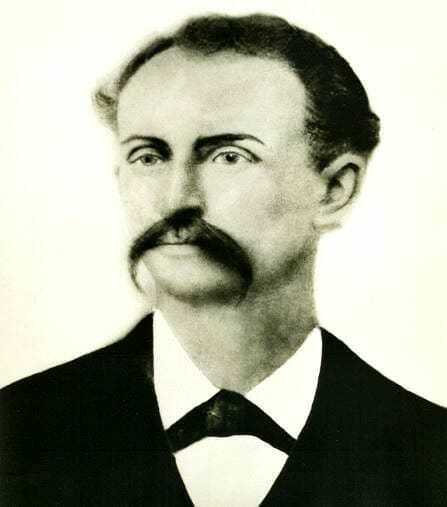 William Lafayette Quick
William Lafayette Quick (1859-1927) operated Quick’s Mill near the community of New Market, Madison County, approximately 15 miles northwest of Huntsville. Although Quick lacked formal education, he was known among friends and neighbors as an experimenter and innovator. Quick was also an astute observer of nature who believed he could devise and construct a flying machine based on his study of the flight of buzzards. He began constructing his machine in 1900 but took almost eight years to complete it. The delay was likely caused by his inability to secure an engine of sufficient power to lift the machine into the air. His design, which was based on a monoplane concept rather than the typical bi-plane arrangement of most designs at the time, included a number of innovations. His craft featured a fuselage, rather than the usual exposed seating area, that allowed the operator to sit in an upright position. The design also included a harness-type mechanism worn by the operator to control up and down movement of the machine. The Quick design incorporated the engine and propeller at the front of the machine to pull it through the air, an arrangement common in modern aircraft. In contrast, typical designs of the period included the engine and propeller located at the rear of the machine. Instead of using a landing skid undercarriage arrangement, Quick developed a wheeled landing gear that included two fuselage wheels and a tail-wheel.
William Lafayette Quick
William Lafayette Quick (1859-1927) operated Quick’s Mill near the community of New Market, Madison County, approximately 15 miles northwest of Huntsville. Although Quick lacked formal education, he was known among friends and neighbors as an experimenter and innovator. Quick was also an astute observer of nature who believed he could devise and construct a flying machine based on his study of the flight of buzzards. He began constructing his machine in 1900 but took almost eight years to complete it. The delay was likely caused by his inability to secure an engine of sufficient power to lift the machine into the air. His design, which was based on a monoplane concept rather than the typical bi-plane arrangement of most designs at the time, included a number of innovations. His craft featured a fuselage, rather than the usual exposed seating area, that allowed the operator to sit in an upright position. The design also included a harness-type mechanism worn by the operator to control up and down movement of the machine. The Quick design incorporated the engine and propeller at the front of the machine to pull it through the air, an arrangement common in modern aircraft. In contrast, typical designs of the period included the engine and propeller located at the rear of the machine. Instead of using a landing skid undercarriage arrangement, Quick developed a wheeled landing gear that included two fuselage wheels and a tail-wheel.
Although no historical evidence exists to substantiate the event, family members relate that in 1908, Quick made one attempt to pilot his machine into the air. Because of insufficient engine power, Quick placed his lighter 16-year-old son, William Massey Quick, at the controls. Witnesses recall that after William Quick started the motor, the machine began to roll slowly across the grass. Gaining speed, it reached a rise in the field, shivered like a kite, and then lurched into the air. Years later, a member of the family estimated that the machine rose to an altitude of eight to ten feet and travelled a distance of approximately 60 to 75 feet before the left wing dropped, causing the machine to strike the ground. Quick never attempted another flight with his invention, but he continued his efforts to improve the design. On October 12, 1913, the United States Patent Office issued a patent for his “Improved Flying Machine.” This design differed significantly from his earlier machine in that it included a folding wing mechanism, retractable landing gear, and an improved control mechanism that allowed the operator to maneuver the machine by means of a steering wheel instead of the harness used in the original design. In 1982, in recognition of his contributions to aviation in Alabama, Quick was inducted into the Alabama Aviation Hall of Fame.
Additional Resources
Bell, Landon C. “Boswell Invents an Airplane.” The Old Free State: A Contribution to the History of Lunenburg County and Southside Virginia, Volume II. Baltimore, Md.: Genealogical Publishing, 1995.
Singleton, Billy J. Images of Aviation: Montgomery Aviation. Charleston, S.C.: Arcadia Publishing, 2007.
———. Images of Aviation: Mobile Aviation. Charleston, S.C.: Arcadia Publishing, 2010.
Sledge, John. “‘Mobile Aviation’ Traces the History of Powered Flight.” Al.com, March 13, 2011; http://blog.al.com/entertainment-press-register/2011/03/mobile_aviation_traces_the_his.html.
Wicks, T. Gary. Images of Aviation: Huntsville Air and Space. Charleston, S.C.: Arcadia Publishing, 2010.

